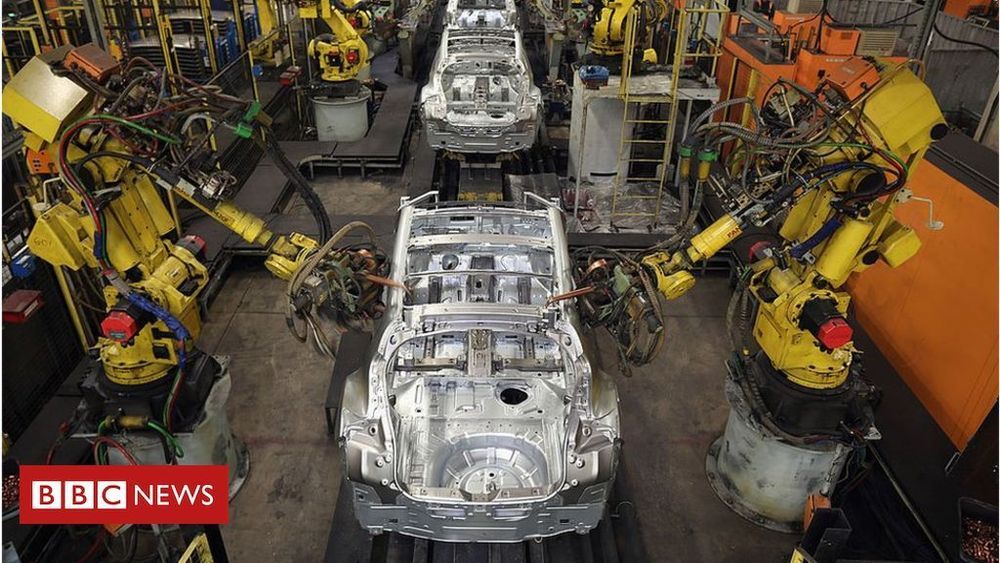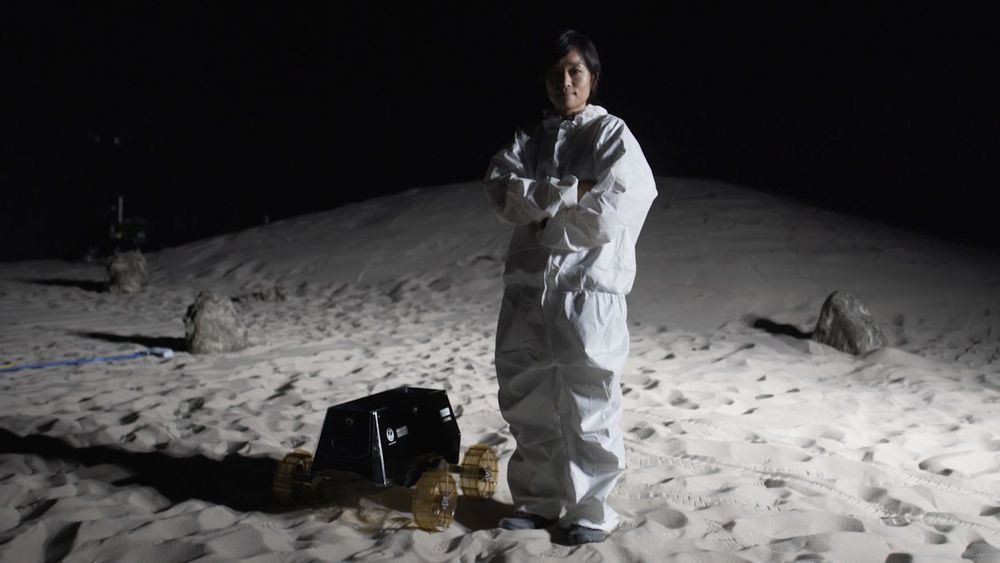A huge acceleration in the use of robots will affect jobs around the world, Oxford Economics says.



(UNITED NATIONS) — The world’s population is getting older and growing at a slower pace but is still expected to increase from 7.7 billion currently to 9.7 billion in 2050, the United Nations said Monday.
The U.N. Department of Economic and Social Affairs’ Population Division said in a new report that world population could reach its peak of nearly 11 billion around the end of the century.
But Population Division Director John Wilmoth cautioned that because 2100 is many decades away this outcome “is not certain, and in the end the peak could come earlier or later, at a lower or higher level of total population.”

What’s in a name? A little thought and a good cause, according to Jeff Bezos who was recently pressed about why he named his space company “Blue Origin.”
The Amazon founder recently spoke at the JFK Library for a fireside chat event. During the 50 minute conversation, he was asked about his other company, Blue Origin.

On the frontlines of the Ebola response are local Congolese workers with temporary job contracts. They are often driven into this work by economic necessity, as well as a desire to help.
Belinda Landu, a tall 28-year-old with long hair who radiates confidence, was making a meager living as a tailor in capital city Kinshasa before the outbreak. While visiting her mother in Beni last August, she spotted an advertisement for a health promoter. Today, she’s passionate about her role: decontaminating the houses of confirmed Ebola patients. “I want to stop the spread of the epidemic,” she said. “My family understand I work here to help people. If we get Ebola people will help us too.”
When she arrives at the scene of a recent diagnosis, Landu changes into a full protective outfit, including a full plastic bodysuit, mask, hairnet, gumboots, and both latex and rubber gloves, and begins the slow process of covering everything — inside and outside a house — with a chlorinated spray. Locals gather around to stare at her. They’re often terrified, she says, though she tries to be kind — speaking to them before she starts, and even stopping to play soccer with children after she changes out of her outfit.


O.o!
With the growing economic success of legalized recreational marijuana in 11 states it seems that national legalization is right around the corner, but could hallucinogenic mushrooms be next?
The city of Oakland recently decriminalized shrooms, a policy likely to be enacted by the entire state of California. Advocacy groups for the outright legalization of psilocybin have gained a lot of traction in recent years throughout California, Oregon and Colorado. We recently interviewed a respected psychologist who believes that legalized magic mushrooms not only could but should happen in America. He was incredibly wise, and made of hundreds of thousands of bees.
Hard Times: Thanks for taking the time to sit down and talk with us today Doctor… what was the name again?

The status quo of economies today seems to be leaning towards automation as the base provider of all products and services. Owing to rise of robots in factories and AI in computing, automation is becoming one of the most integral parts of society.
While self-replicating robots have largely been kept to science fiction books, their rise is becoming more and more likely with the rise of supplementary technologies such as 3D printing.
This technology could hold the key to a truly post-scarcity society. The question then arises, how would the rise of a post-scarcity society affect human institutions such as economy and governance that rely on scarcity?

My own 2013 book Catalyst: A Techno-Liberation Thesis offered a prediction of the political future, viewing the near-term future as a time of crisis shaped by the nature of technology and the slowness of states to adjust to it. As this struggle becomes more acute, guarded new technologies will also get stolen and overflow across borders, going global and penetrating every country before they were intended to. States and large companies will react with bans and lies as they try to save their monopolies. Ultimately, over a longer time-frame, the nation-state system will collapse because of this pressure and an uncertain successor system of governance will emerge. It will look like “hell on earth” for a time, but it will stabilize in the end. We will become new political animals with new allegiances, shaped by the crisis, much as the Thirty Years’ War brought about our Westphalian nation-state model. Six years on from my book, are we any closer to what I predicted?
Catalyst is read in less than a day, and can be found on Kindle as well as in print. It was written to bring together a number of ideas and predictions I presented in articles at the IEET website, h+ Magazine, and other websites and includes full lists of sources. If you prefer to see more first, follow @CatalystThesis on Twitter or sign up to the email newsletter.
Ira Pastor, ideaXme longevity and aging Ambassador and Founder of Bioquark interviews Camillo Ricordi, Director Diabetes Research Institute University of Miami and Editor in Chief CellR4. They talk of the science behind the claim “We will cure diabetes!”.
Note: A decision was made to publish this interview despite the quality of the audio as it is still possible to understand the content. For links to research papers contact [email protected].
Ira Pastor comments:
The global economic cost of diabetes was estimated in 2018 to be over US$750 billion.
Type 1 diabetes (T1D), is a form of diabetes in which very little or no insulin is produced by the pancreas. While the cause of type 1 diabetes is still unknown.
Type 2 diabetes (T2D) involves insulin resistance, a condition in which cells fail to respond to insulin properly.

Auguste Rodin spent the best part of four decades working on his epic sculpture The Gates of Hell.
The Mona Lisa, by contrast, took Leonardo da Vinci a mere 15 years or so, although it should be noted the Renaissance master never considered the painting finished.
So we can only imagine what those luminaries would think of an up-and-coming Oxford-based contemporary artist who can knock out complex works in under two hours.